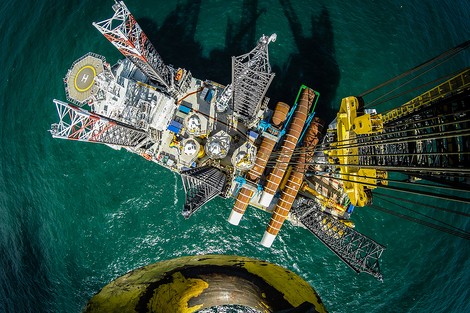Your podcast discovery platform
Curious minds select the most fascinating podcasts from around the world. Discover hand-piqd audio recommendations on your favorite topics.

piqer for: Climate and Environment Global finds Globalization and politics
I'm a freelance journalist, currently based in Madrid. I used to be a News Producer at CNBC in London before, but I thought a little bit more sun might do me good. Now I write for several news organizations, covering a range of topics, from Spanish politics and human rights for Deutsche Welle to climate change for La Marea.
A Primer On Subsidy-Free Renewables
Last week, Swedish company Vattenfall won the concession for a new offshore wind park in the Netherlands and made headlines in the energy sector publications. It wasn't bigger than usual, and its technology wasn't particularly advanced. What made it hit the news was something else: It will be the first subsidy-free wind farm in operation. It brought to mind the first solar plant built completely without public money in the UK back in September. Renewables have officially become profitable enterprises.
Here you have yet another excellent piece of explanatory journalism by Carbon Brief. After their great Q&A on climate modeling (recommended here), the British site returns to the format to explain why this is a big deal, what subsidy-free really means and what sort of obstacles lie on the way to success for the clean energy industry.
While the arrival of subsidy-free renewables means zero-carbon electricity at reduced costs for consumers, it is not without challenges. Overcoming the higher cost of financing subsidy-free schemes is one hurdle; managing variable renewables on the grid is another.
In a nutshell, the proliferation of subsidy-free renewable plants, which is not only happening in the Netherlands, means that the industry is getting over the first stages of maturity, building reliable supply chains and carving a place for themselves in a competitive market. It means consumers are taking them seriously. I'm skeptic about market-oriented solutions, but even to me, this is great news.
Still, there are hurdles to overcome. From policy decisions to funding difficulties, implementing renewables without the state's safety net may still be unnerving. However, of all the barriers explained in the article, I'd highlight the one the author calls "price cannibalisation":
This is where, for example, plentiful solar output on sunny days floods the system and depresses the price that the solar plants earn.
It's an nteresting conundrum, and very industry-specific. Let's see how it gets solved.
